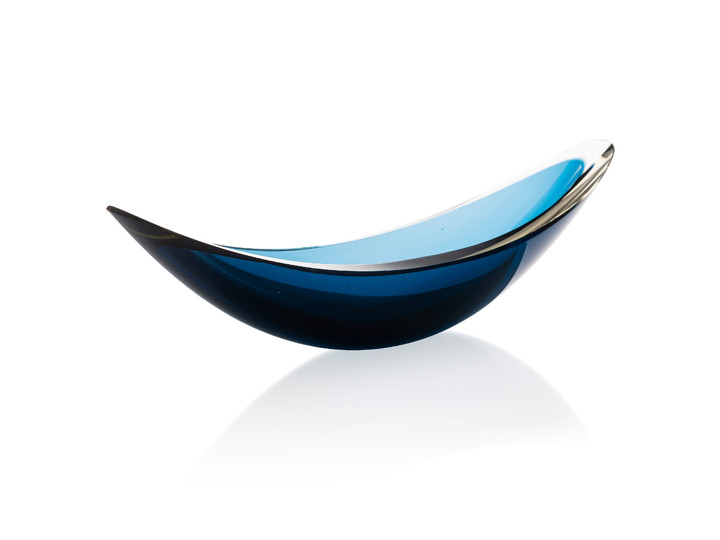Blown glass cup by Kaj Franck. Model KF218.
-
Kaj Franck
-
Nuutajärvi
- DV240501 Available
Blown glass cup by Kaj Franck. Model KF218. Signed.
Literature : Marianne Aav and Nina Stritzler-Levine, eds., Finnish Modern Design: Utopian Ideals and Everyday Realities 1930-1997, exh. cat., The Bard Graduate Center, New York, 1998, p. 145 for similar examples
| Year | 1962 |
| Condition | Very good, no scratches |
| Dimensions | 11.1 x 36.8 x 9.5 cm |
| Material | Glass. |
| Style | Classique Vintage |
| Origin | Finland. |
| Fournisseur | Nuutajärvi |
Kaj Franck
Finland ( 1911 - 1989 )
Kaj Franck is considered one of Finland's most prominent designers. Almost by accident he met Kurt Ekholm, the artistic director of Arabia in 1945. Ekholm was looking for someone to take on the task of developing more functional products for Arabia who was mostly known for ornamental ceramics. He joked with the fun loving Kaj Franck suggesting that he might have some talent for working on a potters wheel (They had met rowing and Kaj Franck could not keep the boat in a straight line but kept turning in circles)
Franck soon became fascinated by the production process but credited his admiration for Gustavsberg's Wilhelm Kage and for the French cubist, Georges Braque as main inspiration. When the former sales director Holger Carring became general manager, Kaj Franck got the opportunity to design "Kilta" the tableware he became best known for. Shown first in 1953 in Copenhagen, these stoneware products became the best known and best sold line of Arabia.
In the first 20 years 25 million pieces were produced. When the Notsjö/ Nuutajärvi glass factory was destroyed by fire and acquired by Wärtsilä, Arabia's owner, Arabia's Gunnar Stahle asked Kaj Franck to design for them. He had won a number of Iittala design competitions (one ex equo with Tapio Wirkkala) and felt quite confident with the new assignment. He left Arabia in 1973 but accepted to re-design Kilta in the late seventies. His career in glass included his work for Nuutajärvi/Notsjö where he became design director in the early fifties. In 1952 he hired two Italian glass blowers from Murano and some of his glass from that period clearly shows Italian influences.
He did not leave Nuutajärvi until 1976. After retiring from teaching he continued to design. Sarvis Oy's plastic table and flatware are fine examples of that late period. Like many Scandinavian designers his concern for democratic design, accessible to all, was as important as was his commitment to innovative functionalism.







